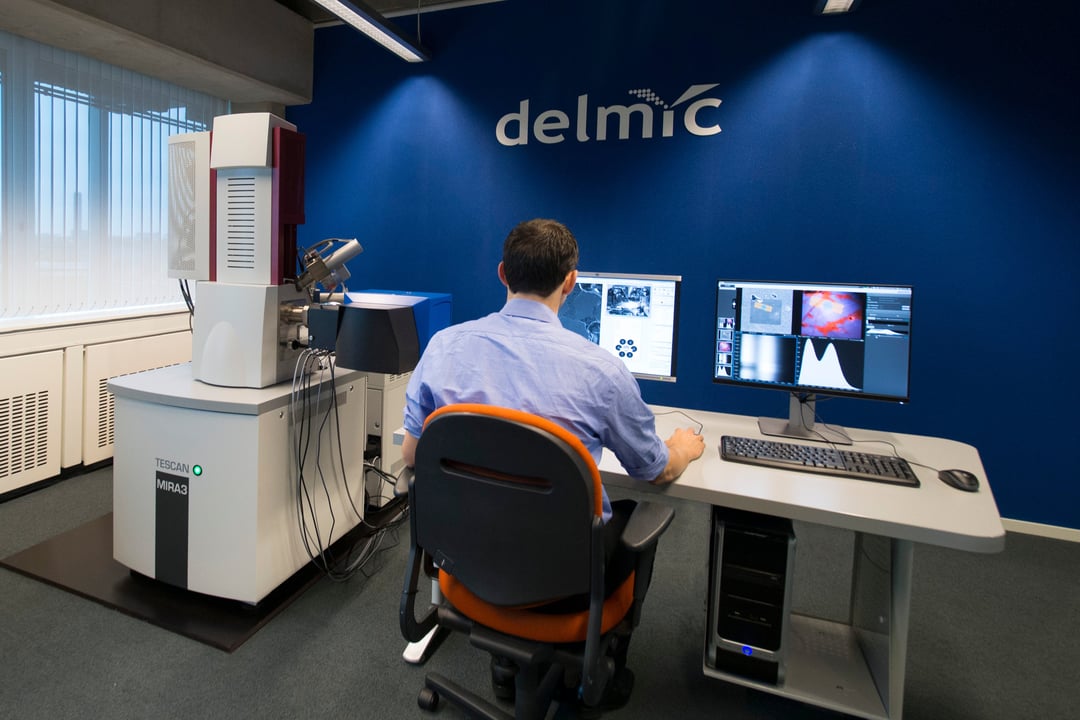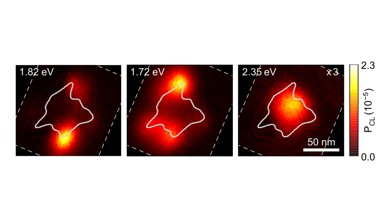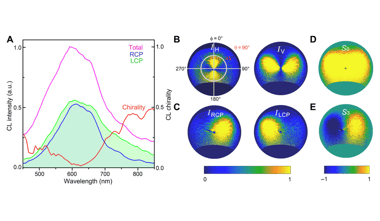DELMIC has had the exciting opportunity to collaborate with TESCAN to have a TESCAN MIRA3 LMU scanning electron microscope installed at the office. During the coming period, our engineers will be assembling and testing the SPARC platform on the TESCAN MIRA3 before shipping the full SEM-CL system to King’s College London.
By having these systems in our very own office, the team will have the chance to work directly on developing the SPARC system for use by the research group in Experimental Nanophysics and Biotechnology led by Dr. Riccardo Sapienza [1] at King’s College.
The SPARC is a high-performance cathodoluminescence system designed by DELMIC, intended to be retrofitted on any SEM model for correlation. Recently, DELMIC has upgraded the SPARC system to be even more versatile and user-friendly. To name but a few upgrades, the monochromator is now directly coupled to the light output from the mirror, enabling fast and easy angle-resolved cathodoluminescence spectroscopy, and the ODEMIS software that comes with the system has been updated (you can read more information and test out the software here). Also, the standard optical rail has been replaced by optical boxes that can be exchanged easily. This makes the addition of a photo multiplier tube, polarizer, or different set of optics as easy as plug-and-play. Just as its original design, the SPARC system is unique for its modularity, sensitivity, and reproducibility. The system can be used for various applications, for instance in materials science.
Dr. Sapienza will make use of our SPARC system in particular to examine nanophotonic systems. His group at King’s College is specifically interested in the propagation of light, and how light particles can be confined at a scale smaller than the wavelength of light. This particular SEM system by TESCAN includes the option to operate at a low vacuum, ideal for studying non-conductive samples in their natural states. The SPARC system, designed as a retrofit for an SEM, can be particularly useful for the study of nanophotonics as it makes use of an electron beam to excite nanostructures and a cathodoluminescence detector to measure the generated light. The SPARC is especially adept at studying such samples due to its angle-resolved measurement, a detection method which maps the angular emission profile of the light that is emitted from an excited structure. Due to the modular design, Dr. Sapienza also has the ability not only to choose for the standard SPARC design, but to add various detectors. Overall, the SPARC system is an extremely useful tool in examining the fundamental relationship between light and matter.
To DELMIC, ease-of-use is essential. With the new key features this platform, we anticipate that our colleagues at King’s College will greatly benefit from a system that Tescan and DELMIC will have worked hard on to optimize for their research goals.
[1] Riccardo Sapienza is a lecturer in the Physics Department of King’s College London, engaged with experimental investigation in the upcoming field of nano-optics in complex photonic media. His research has progressed from light transport in complex media (during his Ph.D. studies in LENS, Florence and LKB-ENS Paris), to the realisation of novel photonic nanostructured materials (postdoc in CSIC-Madrid), to nano-optics and plasmonics in complex structures (ICFO-Barcelona), and electron-optical spectroscopy for subwavelength mapping of the optical modes (with AMOLF-Amsterdam). At present his research deals with unconventional lasing in biomaterials and single-emitter control in hybrid dielectric-plasmonic systems. He exploits the deep-subwavelength spectroscopy capability of cathodoluminescence microscopy to unveil optical mode patterns and local density of states in complex photonic architectures. More info at sapienzalab.org.




